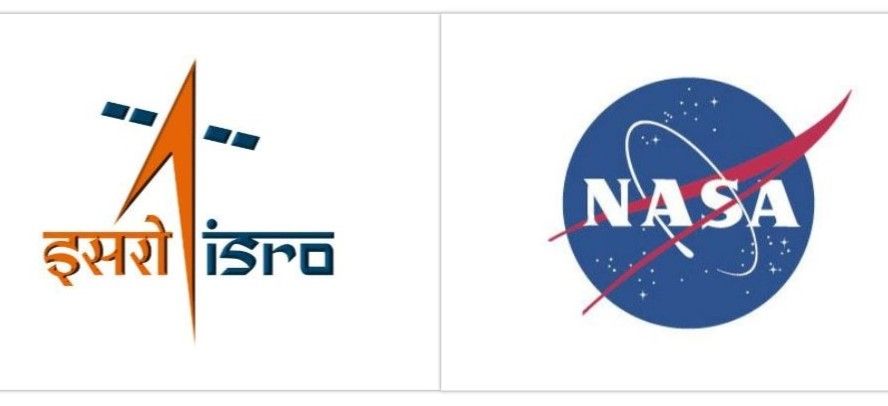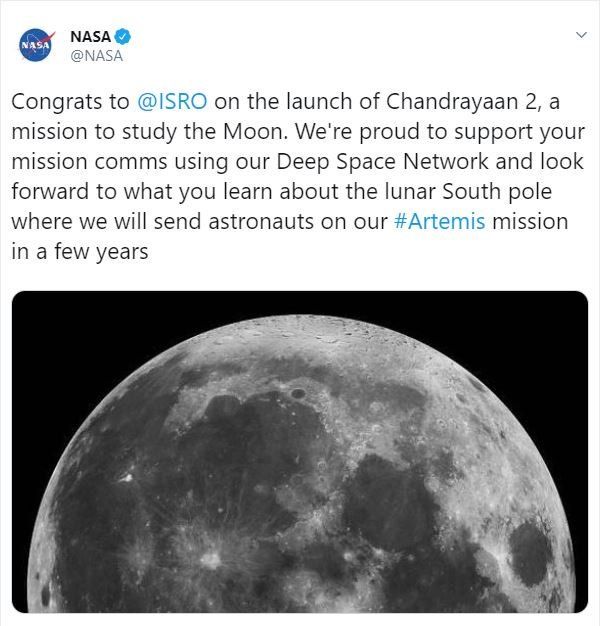Isro Vs Nasa: A Comparison
Aug 20, 2019 • 114 views

ISRO and NASA are among the top five space agencies of the world. They have contributed a great deal, both collaboratively and independently, to expand humanity's understanding of outer space with their relentless space research programs. This article is an attempt to provide an insight into both of these space agencies.
Before diving in, it's important to understand that ISRO and NASA approaches to space exploration are very different. This is, in part, due to their geographical places of origin. India is a developing nation while USA is one of the most developed nations in the world. Also, ISRO was founded in the same year as NASA's astronauts first landed on the moon. This, of course, means NASA’s technological advancements far exceeds ISRO.
So, we have to define them separately first in order to give a clearer picture.
Defining ISRO and NASA:
ISRO:
ISRO, in short for Indian Space Research Organization, is an Indian Government space agency established in 1969.Its vision, as popularized by Dr. Vikram Sarabhai - Father of Indian Space Program, is to “harness space technology for national development.”
[Know more: https://www.isro.gov.in/about-isro]
NASA:
NASA, in short for National Aeronautics and Space Administration, is an Independent agency of the US Federal Government established in 1958. Its vision is “to discover and expand knowledge for the benefit of humanity.”
[Know more: https://www.nasa.gov/about/index.html]

[Caption: On the left, Charles Bolden - NASA chairman and next to him, K Sivan - ISRO chairman]
Comparison:
Annual Budgets:
NASA's annual budget of US$21.5 billion dwarves ISRO's modest US$1.8 billion.
Achievements:
NASA's achievements in regards to space exploration is second to none. NASA was successful in sending unmanned spacecrafts to every planet in our solar system and even Pluto. And of course, the success of Apollo 11's mission in sending astronauts to the moon is its most prized possession. After Apollo 11, five more crewed Apollo missions landed men on the moon.
ISRO's budget may be modest but its achievements can't be any less grander. ISRO is well known for its high success rates with cost efficient missions. ISRO was the first to send a spacecraft to Mars [Mission Mangalyaan] in its first attempt. Besides this, it is the fourth to land on the Moon. And now recently, with Chandrayaan-2, ISRO will make India the first nation to explore the lunar south pole. It also holds the record of sending 104 satellites at once on a single rocket. [https://www.space.com/35709-india-rocket-launches-record-104-satellites.html]
Launch Vehicles:
NASA's launch vehicles have heavy lifting capacity and they are put together with a lot of help from private space agencies in the country. ISRO's indigenous launch vehicles like GSLV, PSLV, and Sounding Rockets has a long way to go in that regard.
Technology:
NASA is known for being the first to develop cryogenic technology. This technology, where liquid hydrogen is used as a propellant for launch vehicles, is what made the moon landing possible. ISRO stands sixth in developing a homegrown cryogenic technology after USA, Russia, France, Japan, and China. However, it’s not still errorless like NASA’s.
[An informative piece on ISRO’s long road to Cryogenic Technology: https://www.thehindu.com/opinion/lead/The-long-road-to-cryogenic-technology/article14691425.ece]
Future missions:
NASA has plans to send the first space helicopter to Mars. Sending humans back to space [Artemis 2024] is another exciting mission of theirs. ISRO is gearing up to send Indians to space in a Indian spacecraft for the first time with its Gaganyaan mission.
Workforce:
NASA has a workforce of 17,000 employees with diverse backgrounds while ISRO has 648 employees.
One Interesting fact is that, according to NASA’s workforce data, 1.1% of its 17,000 employees are American Indians or Alaskan natives. [https://www.nasa.gov/offices/odeo/workforce-data]
As we all know, Scientists and Engineers of Indian-origin have been making their mark in NASA fora while now.

Collaboration between NASA and ISRO:
Space agencies, unlike other entities, are more collaborative than competitive. And that is only the way for space exploration to prosper. Here are some key collaborations between ISRO and NASA:
NISAR, in short for NASA-ISRO Synthetic Aperture Radar, is a joint venture to develop and launch the first ever radar imaging satellite. [In detail: https://nisar.jpl.nasa.gov/]
NASA sent its laser retroreflector as part of Chandrayaan-2 mission.
NASA conveyed its interest in forming a working group with ISRO for Gaganyaan mission. There's also a plan to collaborate on future Mars explorations.
Scuffles between ISRO and NASA:
Despite their co-operative attitudes, NASA and ISRO had their share of differences over the past few decades. The first of the many were USA's refusal to hand over cryogenic technology to India forcing ISRO to shift to homegrown technology.
Most recent was NASA's alarming response to ISRO's Anti-Satellite Testing on March 27. It even suspended its co-operation in NASA-ISRO Human Spaceflight Working Group. But all was well when both mend their differences and resumed their co-operation after a week.
[Know more: https://spacenews.com/nasa-resumes-cooperation-with-isro-after-asat-test/]
Takeaway:
ISRO focuses more on homegrown technology and the purpose of its missions are modest. NASA, on the other hand, is open to collaboration and, of course, their wield over space exploration is undeniable.
